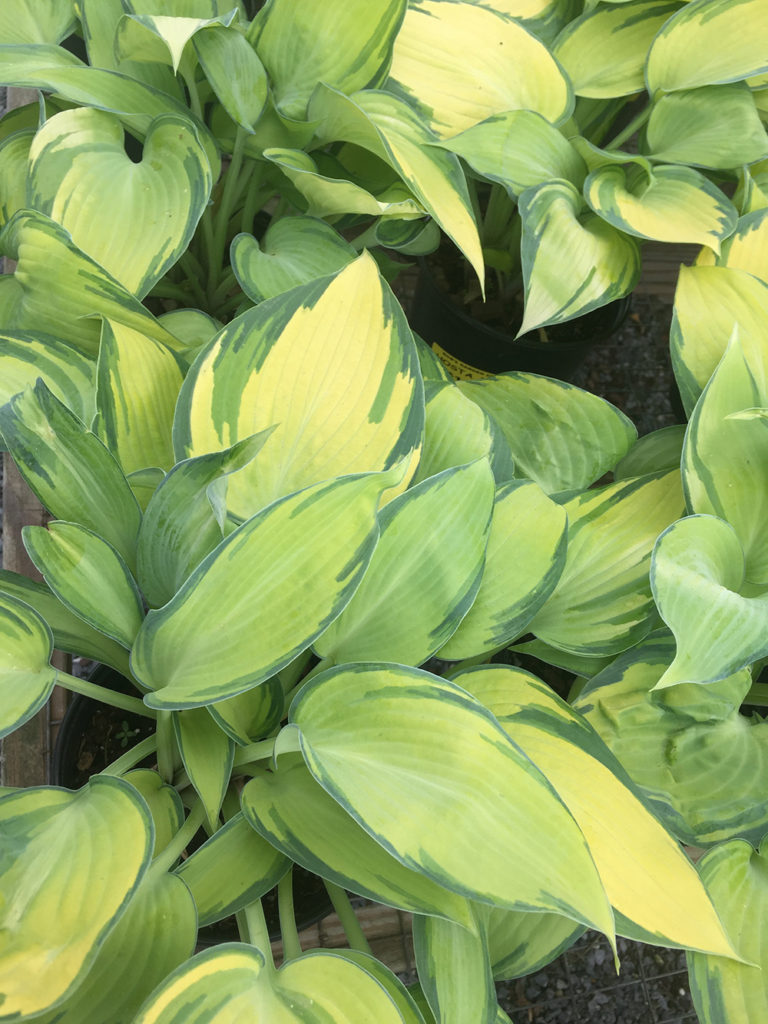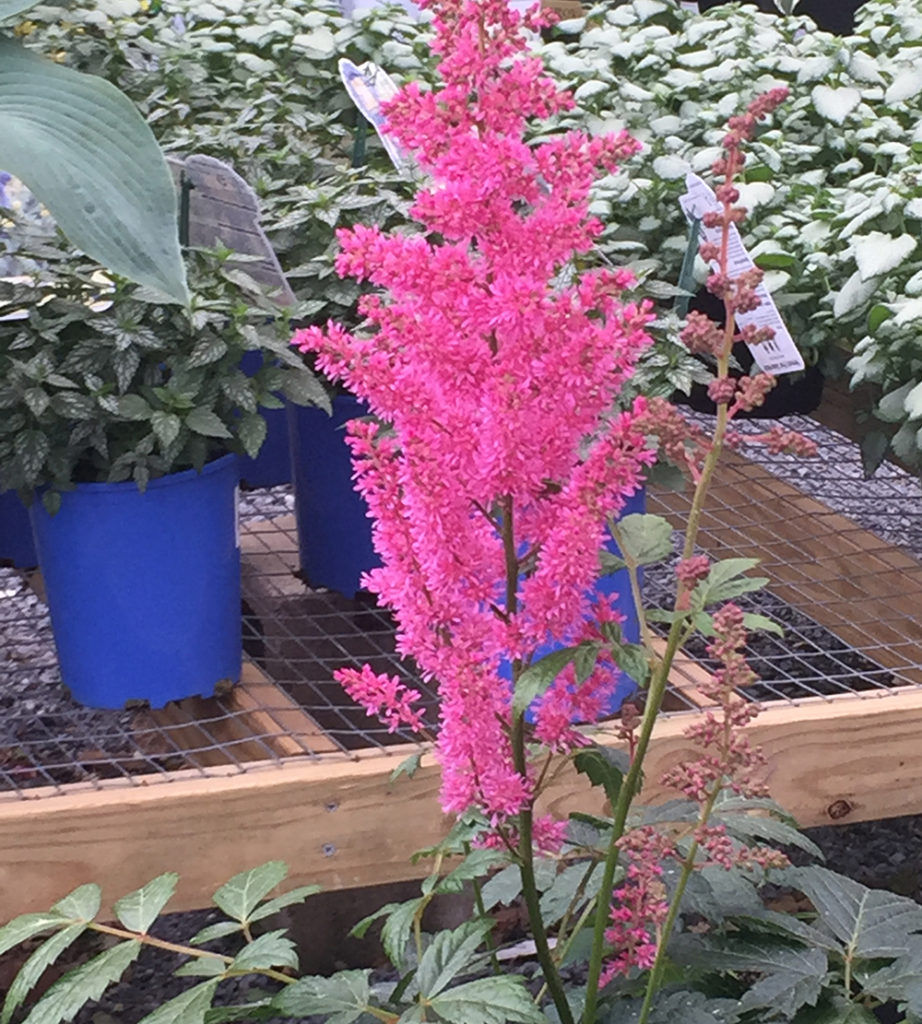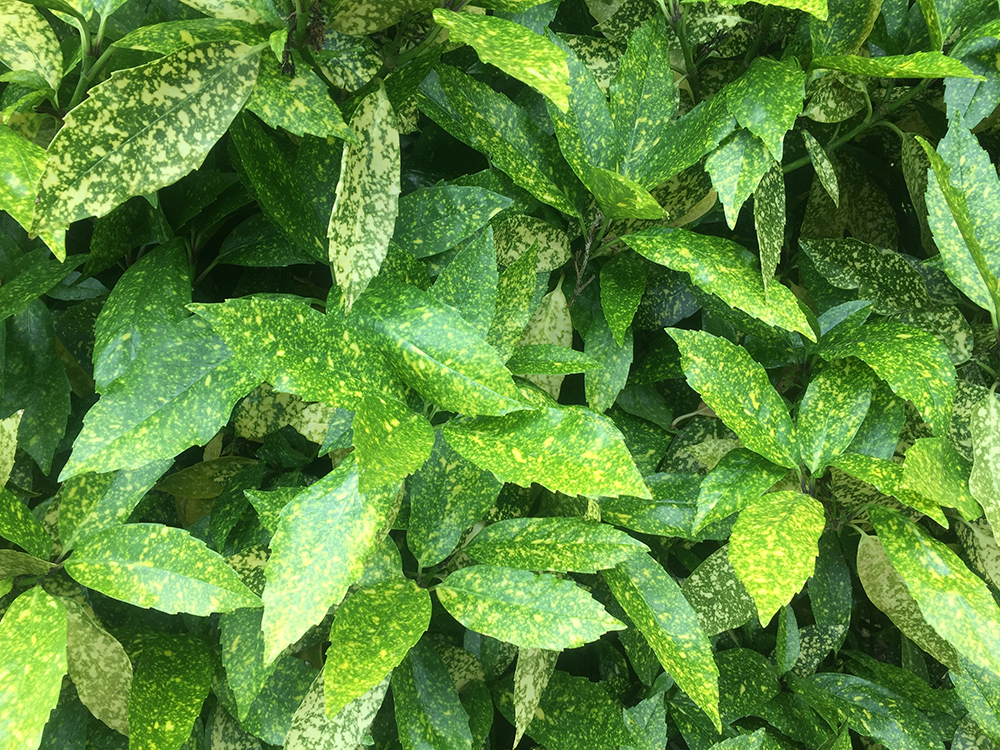Made in the Shade Gardens
By Tammy Thornton

Not all of us are blessed with sun-filled gardens that can boast showy, colorful flowers. Even sunny yards usually have a shady side to them. So what’s a gardener to do? This time of year, embrace it. When the summer heat is beating down, I enjoy walking around the side of my house, under an arbor, and through a serene, shady, and cool passage. It feels like a moment of peace before bursting into the hot, sunny backyard.
Those with shady gardens often wonder which plants will do well in shade. Although you can still enjoy flowers in your garden on the dark side, it’s good to focus on foliage. You can create dramatic interest through color, texture, and shape. One of my favorite plants to use in the shade are variegated hostas. The white or yellow stripes brighten up a dark space and are visible at night. Hosta leaves can be many shades of green, hues of blue, or even white. In the summer, they send up stems with tubular white or purple flowers that attract hummingbirds. They are perennials, and after a few years will grow large enough to divide with a spade…giving you free new plants! If you begin to notice holes in their leaves, crumble eggshells around them to keep slugs away.

Another impressive shade plant known more for its foliage than its flowers is coleus. Though it is an annual, the colorful leaves of chartreuse, hot pink, purple, or burgundy make them worth buying even though they will only last a season. They add a lot of color to a shady spot. Coral bells (heuchera) are also known for their foliage and, like hostas, come in all different shapes and colors. They stay in a nice tidy clump, and their tall stems will have tiny “bells” of pink or coral. Solomon’s seal and lily of the valley are shade lovers that also have little bell flowers. Lilies of the valley can tend to be aggressive spreaders, but considering the heavenly smell of the flowers in May, you shouldn’t mind.

Ferns are also aggressive growers but give off a peaceful vibe. Every year when they get too dense, I just pull some out and plant them in pots on my porch for a tropical feel in the summer. I have seen dreamy pictures of forests filled with ferns and bluebells. Astilbe are well-behaved plants for shade that have fern-like leaves and send up spikes of flowers resembling plumes of feathers in pink, white, or burgundy.

Of course, my go-to flowers for shady gardens are impatiens. These annual flowers come in so many different colors to suit your taste. For a really dark corner, choose a lighter color such as pale pink or white. Otherwise, some of the deeper shades will disappear—especially in the evening.
Often. some sun will reach a shady part of the garden at least part of the day. Even under the cover of trees, filtered light will penetrate through the leaves. And the area under deciduous trees that lose their leaves in fall may be sunny enough for spring bulbs such as tulips and daffodils to bloom. Partial shade gardens can be filled with perennial hydrangeas, azaleas, rhododendrons, and bleeding hearts (dicentra).

Enjoy your shady garden as a respite from the heat. Place a garden bench in the corner, pour yourself a glass of iced tea, and ponder the day. You’ll realize how blessed you are to be living in the shade.

Tammy Thornton is a mom of four, a substitute teacher, and a Sunday school teacher. She is passionate about gardening and cooking, and loves the beach.





